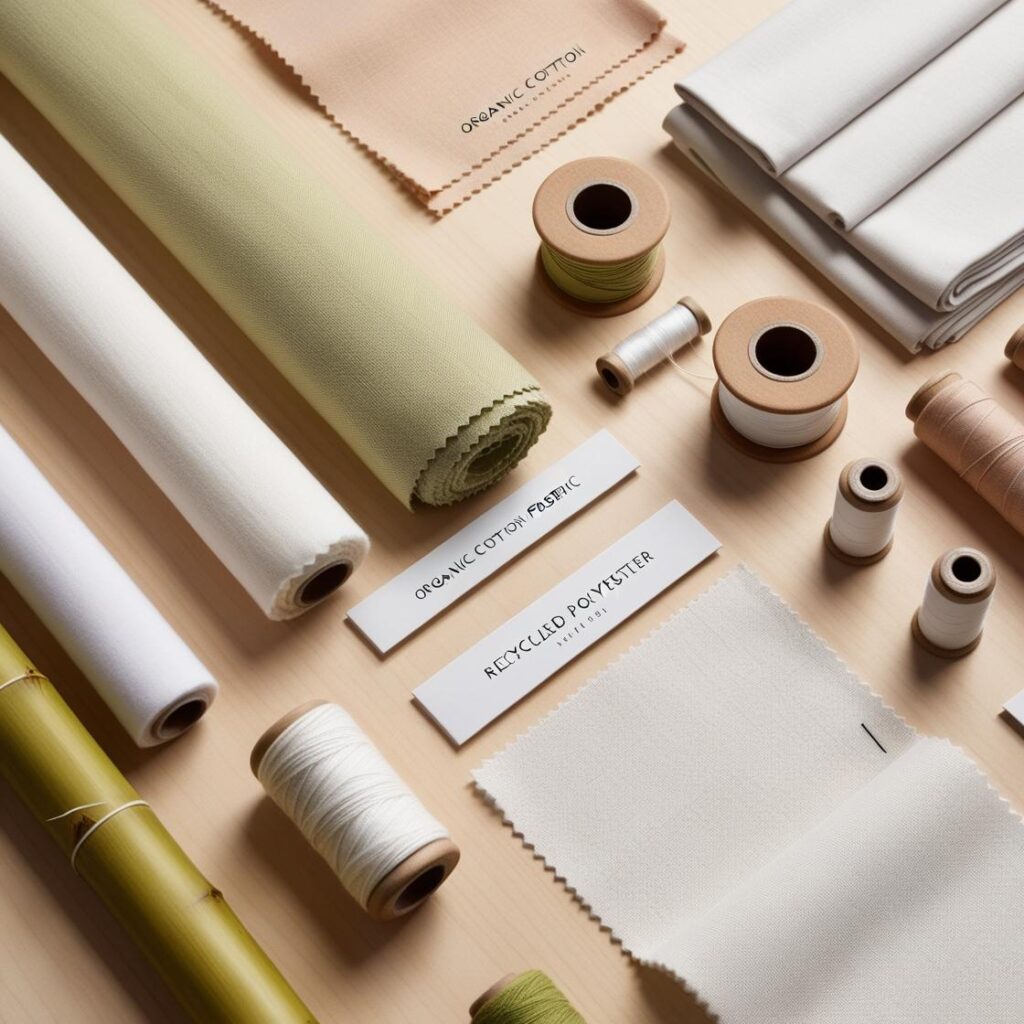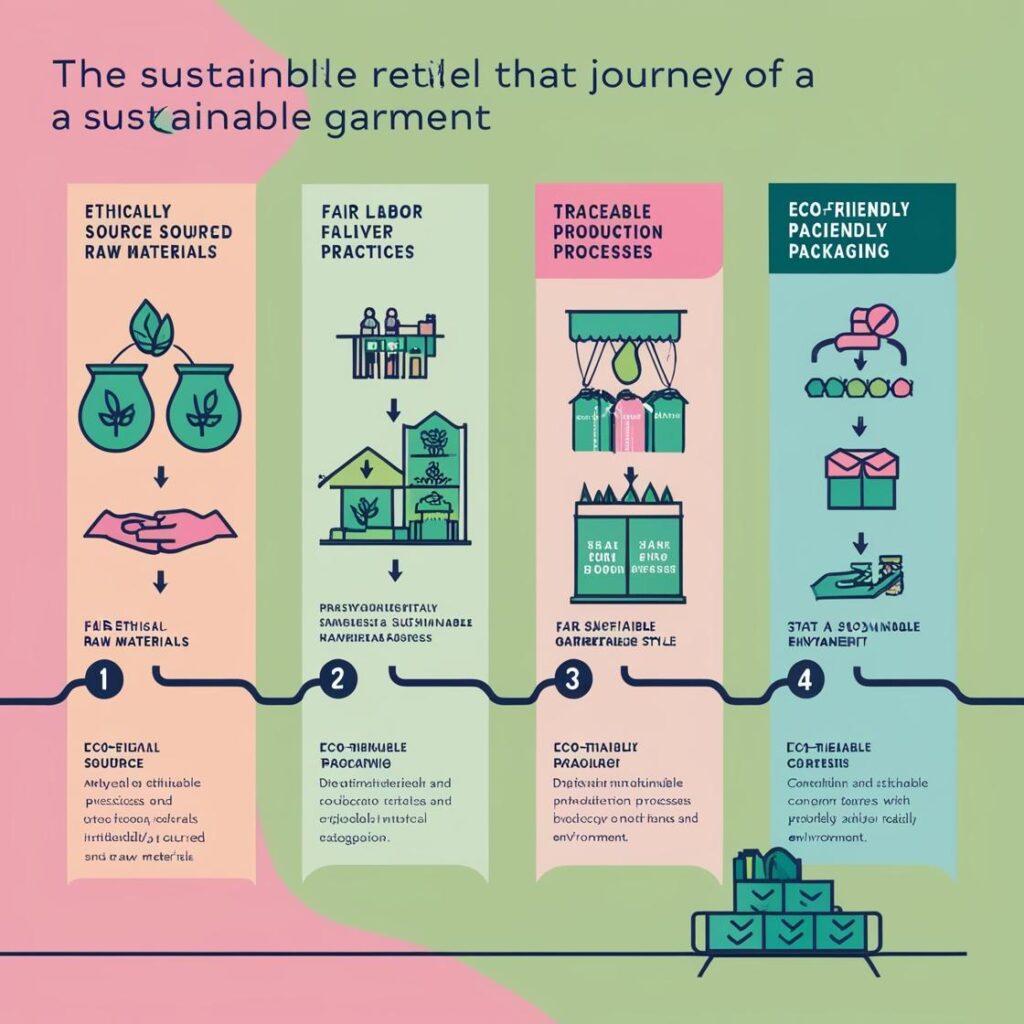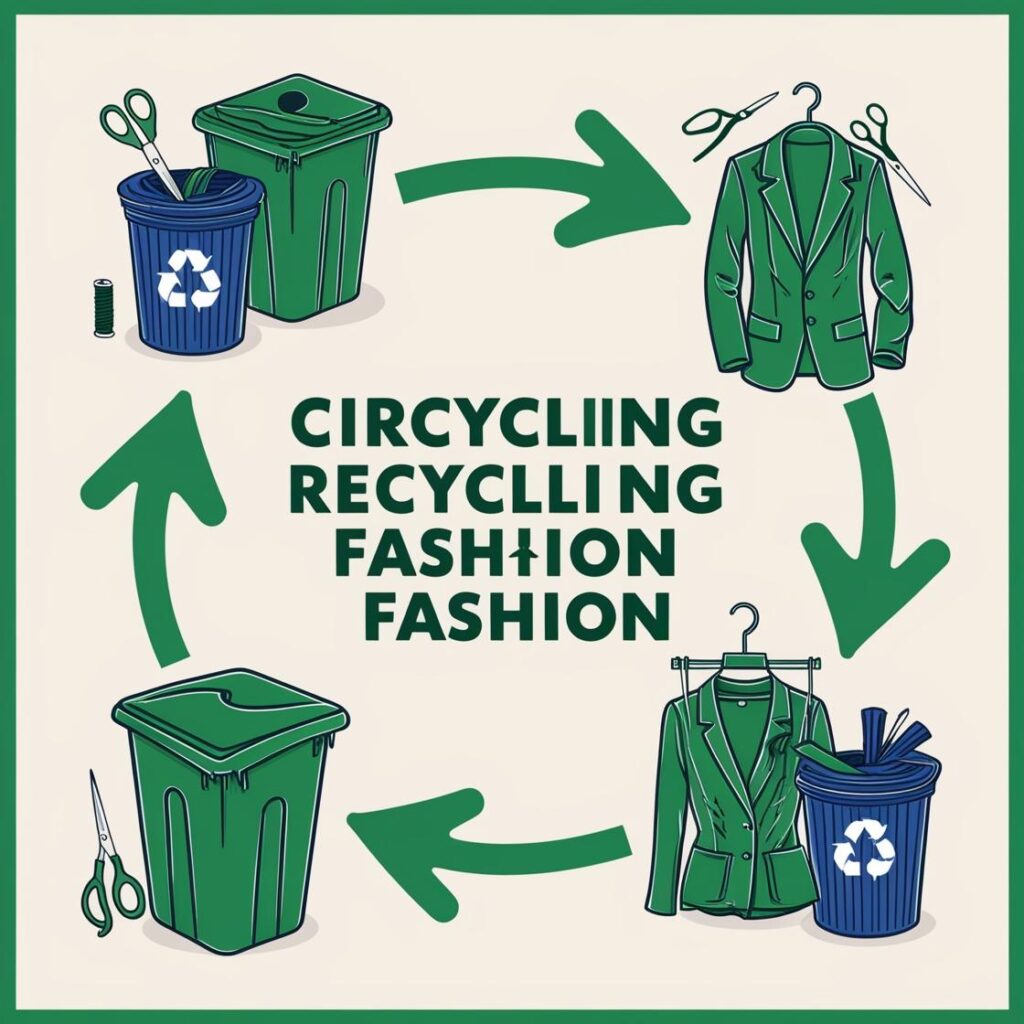In 2025, the fashion industry will transform into sustainability. Once limited to a small niche segment, sustainable fashion trends are now enacting global change on an unprecedented scale.
But what is sustainable fashion?
What are sustainable fashion trends?
And what trends can we expect to see in 2025?
This ultimate guide into the upswing of the sustainability fashion movement—filled with 2025 sustainable fashion trends and a positive future ahead tackles it all.
What is sustainable fashion?
Sustainable fashion is an umbrella term covering the broad range of activities required to accomplish ecological and fair trade practices. It is about producing apparel and accessories in the most environmentally friendly fashion possible, from sourcing products to working conditions.
This style encompasses everything from material choices to fair wages for factory workers.
At its heart, sustainable fashion aims to minimise the lifecycle impact of clothing on the environment. It can be done through different ways, such as:
- Eco-Friendly Materials: These are non-toxic, made from rapidly renewable or recycled materials (environmentally preferable), farmed and harvested sustainably, require little energy input, minimise pollution, and have low-impact installation.
- Ethical Production: Upholding fair labour practices, pay, working conditions, and worker rights.
- Sustainable Business Models: Adopt methods like slow fashion, quality over quantity, and persuading users to buy less but well.
- Circular Fashion: The premise of circular fashion is designing products with a complete lifecycle that might make them easy to recycle or upcycle.
Sustainable fashion became a relevant topic because it identified the industry’s alarming environmental footprint caused by traditional industrial practices.
On the global scale, it accounts for about 10% of all human-made carbon emissions and generates outrageous waste annually. By adopting sustainable practices, the industry can significantly reduce its footprint.

Is this the sustainable fashion crash?
The latest trends in sustainable fashion are a new way to showcase your unique personality.
More people are becoming more informed about our planet’s real issues and influencing a push for environmentally correct shopping. This knowledge has been attributed to some things over the last decade, including:
- Consumer Awareness
Janina Schot, Development Manager at Global Compact Network Sweden: “Notably, environmental and social awareness among consumers has increased from 2010 to today. Do any of these sound familiar to you? Where was the product manufactured? “Who made it?” and “What is it made from?” The change in consumer behaviour has also translated into brands being much more exposed and answerable.
- Brand Responsibility
With consumers growling for sustainable choices, brands have become increasingly ethical. For this reason, large fashion houses and fast-fashion brands are creating sustainable collections based on eco-friendly materials and more transparency in their supply chain.
- Technological Advancements
High-tech innovation has been central to the surge of sustainable fashion. Advancements in fabric technology, from lab-grown leather to polyester made from recycled plastic bottles, have helped brands manufacture eco-friendly products.
- Law and Standards
As environmental issues in fashion continue to rise on the agenda, more regulation is coming into play for governments and industry bodies, which could help reduce their impact. These range from bans on various carcinogenic substances to inducements for recycling, and such actions are facilitating this change.
- The Influence of Social Media
Social media platforms have emerged as one of the most valuable resources for spreading the word on sustainable fashion. In some cases, they can inspire influencers, bloggers, and activists to use their platforms more effectively by educating followers on issues in the fur trade. This action has led to sustainable fashion becoming more mainstream.
Is sustainable fashion a trend?
Is sustainable fashion another trend? Sustainable fashion is unlikely to represent a passing trend because of the evidence. Sustainable fashion is not a trend or fad that comes and goes; this is an inherent cultural shift.
- A shift in consumer values
Contemporary consumers are no longer merely interested in stylish clothes they see. Like compelling tales on social media, items that connect profoundly and meet their underlying reference values of what people want to buy now entice them. Sustainability, ethics, and transparency are becoming vital to many buyers’ buying strategies, which has caused changes in global consumer attitudes and shows that sustainable fashion is here to stay.
- Industry Commitment over the Long Term ‘
Sustainability is not a transitory trend, as the industry has maintained it. Brands are spending more on sustainable practices, from utilising eco-friendly products to minimising waste and carbon emissions. This investment suggests a long-term trend.
- Integration into the Business Model
Sustainable fashion in brand business models fosters industry isolation. Many firms abandon the practice after one collection, but others engage in sustainable business models, including recyclable materials, alternative energy, and circular business models, and require sustainable supplier practices.
- Consumer’s Perception of Brands
Consumer perception keeps sustainable fashion relevant, so consumers are better aware of sustainable product manufacturing and less receptive to businesses’ superficial promises. Authentic, sustainable brands have more loyal customers.
Trends in Sustainable Fashion
In 2025, the fashion industry will further reduce its impact on the environment and consumers, and a few critical trends that reflect this development have been identified.
Use of Eco-Friendly Materials
The fashion industry uses eco-friendly materials, which are encouraged. Cotton, hemp, bamboo, organic cotton, and recycled polyester are widely available and utilised to make more durable and pleasant garments.
- Organic Cotton: Unlike conventional cotton, organic cotton does not contaminate water or damage land with synthetic fertilisers and pesticides.
- Recycled Polyester: Made from recycled plastic bottles, recycled polyester reduces the demand for petroleum-based polyester and diverts plastic waste from land to sea.
- Bamboo: Bamboo, one of the fastest-growing plants, has been an eco-friendly and sustainable alternative to wood for decades. Its biodegradability makes it perfect for sustainable fashion.

Circular Fashion
Circular fashion is becoming increasingly popular to reduce waste and increase product life. It involves making recyclable, repairable, and upcycled products. A closed-loop textile and clothing reuse system is desired.
- Recycling and Upcycling: Brands inspire consumers to recycle or post them to be upcycled into new products. Not doing so is not only wasteful but also shortens the life of our clothes.
- Long-lasting: Many players in this sector are attempting to manufacture durable goods. This act is possible by using quality materials and making suitable garments that last a long time, thus buying cheap clothes in bulk.
Transparent supply chains
- Sustainable fashion: The value of supply chain transparency Consumers want to know who created their items and how. Conscious buyers trust and patronise businesses that disclose their supplier chains more than ever in fashion history.
- Traceability is the product’s journey from Raw Material to being converted into a finished garment. Jay1 Blockchain and other technologies offer customers insight into the sources of their products.
- Fair Labor Practices: Transparency regarding labour practices. I am happy that brands are more transparent about factory conditions and wages. This is vital for ensuring that sustainable fashion denotes both an environmentally sound and socially responsible approach.
Green Fashion Trends 2024
Innovative and sustainable fashion in 2024 might boost the Home trend. Companies cleverly incorporate environmental conscience into their designs while maintaining style as customer demand for eco-friendly options grows.
- Eco-friendly Dyeing: Natural dyes from plants and toxic-free dyes are on the rise. These dyes do not have potentially toxic components, which can leach into our waterways.
- Sustainable Packaging: Using biodegradable material composed of cornstarch for mushroom mycelium is also becoming more popular, which can reduce the ecological impact of shipping and delivery.
The Influence of Technology
Tech is transforming sustainable fashion. Due to 3D printing and AI-driven design, brands can no longer manufacture like they used to. SO technologies can help them become more sustainable.
- 3D Printed Clothes: Clothing will be made using 3D printing, a total game-changer. This idea leads to more accurate production with little or no waste, requiring less fabric and materials.
- AI-Enabled Design: Automated trends predictions through AI, optimal supply chains, and designed-for-zero waste products. This capability allows brands to be more efficient and sustainable.
The Future Of Sustainable Fashion?
The future of sustainable fashion is intense but complicated. While the movement is still in its infancy, significant concerns must be addressed within the industry to ensure long-term sustainability.
- Scalability
Scale is sustainable fashion’s biggest challenge. Small, independent start-ups have made remarkable gains (and the sustainable business model concept defined one generation), but huge organisations can handle a more significant task. Scaling sustainability across a global supply chain requires massive investment and ingenuity.
- Affordability
Due to its high price, many people need help to afford sustainable fashion. To democratise sustainable fashion, brands must find manufacturing expenses they can cut while maintaining integrity and ethics. These may focus on manufacturing, material procurement, or business methods.
- Consumer Education
Educating shoppers about sustainable fashion and its impact on society is crucial. Unfortunately, sustainability, diversity, and pricing are still perceived as choices. Helping customers understand the whole picture by boosting awareness and giving accurate information about this industry, starting with daily brands, is crucial.

- Innovation and Collaboration
Future sustainable fashion will depend on brand-government collaboration and customer voice. Innovation is needed to solve scalability and cost issues. New materials, circular business models, and industry-wide standards and certifications may result.
- Global Impact
Sustainable fashion has the opportunity to effect global change, and the movement is growing. It has a lot of value, as it helps reduce the environmental impact of the Logotherapy Industry and supports fair labour practices, which help us get closer to consuming less.
FAQs
- What are the principles of sustainable fashion?
Sustainable fashion promotes long-lasting clothes, good working conditions, and environmental protection. It includes sustainable raw materials, equitable manufacturing conditions, and circular business strategies.
- Is sustainable fashion that cheap?
Sustainable fashion costs more because companies offer workers a livable wage, but manufacturers are lowering pricing as it gets more popular. Costs are falling due to advancements in production and material sourcing.
- What can consumers do to promote sustainability in fashion?
Choose quality over quantity, purchase less, and support ethical products. Companies must also become green through recycling and upcycling. One must also study sustainability and pick it up correctly.
- What If Fast Fashion Brands Get Sustainableess-crazy?
Fast fashion firms are implementing sustainable principles to varied degrees, but customers may study and only buy from brands that match their ideals. To make fast fashion viable, business structures and production techniques must alter drastically.

- Where is sustainable fashion going next?
Future sustainable fashion trends include using eco-friendly materials, adopting circular business structures, and increasing supply chain transparency. Technology like 3D printing, AI design, and blockchain traceability will also be necessary.
Conclusion
Sustainable fashion is a moral movement that is changing the business. Consumer demand, technology advancement, and ethical business practices will make sustainability even more critical in 2025.
Sustainable fashion trends is the future because it’s about improving the planet, not simply manufacturing clothing. Decisions taken now will shape fashion in the future.
Let’s choose sustainability; let’s choose the future over the now.




